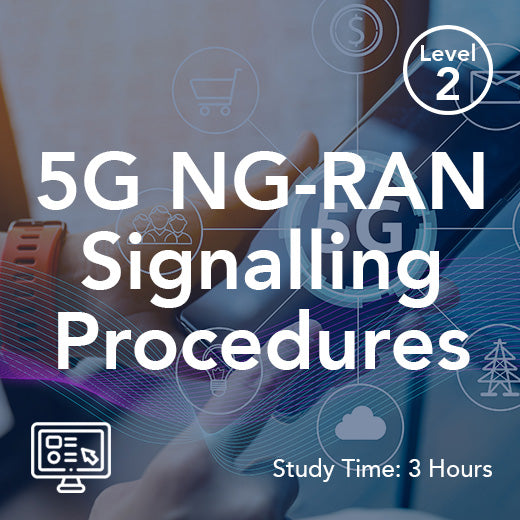Understanding Half Duplexing: A Simple Guide for Everyone
- , by Paul Waite
- 12 min reading time
Half duplexing is a fundamental concept in the realm of communication technologies, providing a straightforward yet essential method for two devices to communicate with each other. Unlike full duplexing, where data transmission occurs simultaneously in both directions, half duplexing requires the devices to take turns, sending and receiving information one at a time. This approach can be likened to a polite conversation where each participant waits for the other to finish speaking before responding, emphasizing that after one person speaks, the other is expected to respond. In contrast, simplex communication, or simplex, is a one-way communication mode where data flows only in one direction, such as in keyboards or broadcast systems, with no ability for the receiver to respond. In this guide, we will delve into the intricacies of half duplexing, making it accessible and understandable for everyone, regardless of their technical expertise.
What is Half Duplexing?
Basic Principles of Half Duplexing
Half duplexing operates on a simple principle: communication happens in two way communication, one direction at a time. When one device sends data, the other must wait until the transmission is complete before responding. This method is akin to a walkie-talkie system where only one person can speak at a time while the other listens. A walkie-talkie is a classic example of a half duplex device, which can only send or receive at one time, not both simultaneously. The key component of half duplexing is the switch between sending and receiving modes. This transition is typically managed by a control protocol that signals when a device can transmit or receive. This setup is efficient for channels where data needs to travel in both directions, but not simultaneously. It is particularly useful in systems where bandwidth conservation is crucial or where simultaneous communication is unnecessary. However, the transmission capacity of half duplex systems is lower than that of full duplex systems, as half duplex does not utilize the full bandwidth of the channel at all times. By understanding these basic principles, one can appreciate the elegance and practicality of half duplexing in everyday technology.
Comparing Half and Full Duplex Systems
When comparing half duplexing to full duplexing, the main difference lies in the direction of data transmission. In a full duplex system, a full duplex device enables bidirectional communication by allowing both parties to send and receive data simultaneously. This means information flows in both directions at the same time, supporting real-time, two-way data exchange. Full duplex systems are designed to maximize efficiency and throughput, making them ideal for real time applications where immediate response is critical.
This allows for more efficient and faster communication as both devices can send and receive data at the same time. Full duplex systems avoid data collision by enabling both parties to send and receive without interference, and full duplex doubles the channel's utilization compared to half duplex systems. However, this requires more complex hardware and greater bandwidth, which can be costly and resource-intensive. A reliable connection is essential for maintaining continuous, high-quality communication, and echo cancellation is often used in full duplex systems—especially in real time applications like telephony—to ensure clear audio and prevent feedback.
On the other hand, half duplex systems, where data transmits in only one direction at a time, are simpler and more cost-effective. In half duplex, only one party transmits at any given moment, so sending data and receiving data (send data) occur alternately, not simultaneously. They require less bandwidth and are easier to implement in environments where simultaneous data transfer is not critical. The way information flows in half duplex is sequential, unlike the simultaneous flow in full duplex systems.
For examples, walkie-talkies and traditional CB radios make use of half duplexing, as do many legacy communication networks. Telephones and modern Ethernet connections are examples of systems that use full duplex mode. Understanding these differences helps in choosing the right half duplex system based on the specific needs and constraints of a given application.
Real-World Applications
Everyday Devices Using Half Duplexing
Many everyday devices utilise half duplexing to facilitate communication. Walkie-talkies are a classic example of half duplex operation, where users can talk to each other but must take turns speaking. This is due to the half duplex nature of the device, which only allows transmission in one direction at a time. The range of walkie-talkies and CB radios is an important factor in their effectiveness, as it determines how far users can communicate. Similarly, traditional CB radios operate on the same principle, popular among truck drivers and hobbyists for clear and simple communication over short distances.
Another common use is in Ethernet networks, particularly older systems where half duplexing was a standard. Computer networks, especially early Ethernet systems, historically used half duplex communication to manage data transmission between devices. Although modern networks often use a full duplex mode for faster data transfer, half duplexing remains relevant in many industrial and legacy systems. Even Bluetooth devices, like wireless headsets, sometimes employ half duplexing to manage audio data effectively. Understanding these applications highlights the practicality and efficiency of half duplexing in various technologies we encounter daily.
Half Duplexing in Communication Systems
Half duplexing plays a significant role in various communication systems, providing efficient data transmission solutions where full duplexing is unnecessary or impractical. One notable application is in radio communications. Many public safety and emergency services use half duplexing, allowing for clear radio communication systems, without the need for complex infrastructure. In these environments, half duplex and full duplex systems are contrasted: half duplex allows only one end to be transmitting at a time, while full duplex enables simultaneous two-way communication, which can be more complex and costly to implement.
In mobile telephony, while most modern systems utilise full duplexing for voice calls, half duplexing is still prevalent in push-to-talk services. These services mimic the walkie-talkie style of certain radio communication systems, offering a cost-effective solution for businesses requiring instant communication. In half duplex systems, one end is responsible for transmitting while the other listens, and then they switch roles, ensuring orderly communication.
Satellite communication systems often employ half duplexing as well, especially in scenarios where bandwidth is limited or costs need to be minimised. This approach ensures reliable data exchange without overburdening the network. By leveraging half duplexing, these systems maintain effective communication channels, balancing the need for simplicity, cost savings, and functionality.
Advantages and Limitations
Benefits of Half Duplexing
Half duplexing offers several benefits, making it a preferred choice in many communication scenarios. One of the primary advantages is cost-effectiveness. Half duplex systems require simpler and less expensive hardware compared to full duplex systems, which can be crucial for budget-conscious projects or in developing regions.
Additionally, half duplexing is easier to implement, especially in environments where full duplex operation is not necessary. For instance, in scenarios where communication does not need to be continuous in both directions simultaneously, half duplexing provides a practical solution without the complexity of managing simultaneous data flows.
Half duplex systems also conserve bandwidth, an essential factor when the available bandwidth is limited or needs to be allocated efficiently among multiple users. This feature is particularly beneficial in radio communications and other wireless applications where spectrum is a finite resource. Overall, half duplexing provides a robust balance of simplicity, efficiency, and cost savings.
Potential Drawbacks and Challenges
While half duplexing offers several advantages, it is not without its drawbacks. One of the main challenges is the inherent limitation in data transmission speed. Since communication only occurs in one direction at a time, half duplex systems can result in slower data exchange compared to full duplex systems, which might not be suitable for time-sensitive applications. Additionally, data cannot be received simultaneously in half duplex systems, further limiting efficiency in high-traffic scenarios.
Another potential drawback is the need for strict coordination and control protocols to manage the switch between sending and receiving modes. In half duplex communication, only one party can transmit at a time, and the other party must wait for their turn before responding. This requirement can introduce latency, particularly in networks with multiple users, as each device must wait its turn to the communication mode to communicate.
In scenarios where simultaneous communication is essential, half duplex systems may fall short, leading to inefficiencies or communication bottlenecks. This limitation can impact user experience in applications requiring real-time interaction, such as video conferencing or online gaming. Understanding these challenges is crucial when considering half duplexing for specific applications, ensuring that its limitations align with the system’s needs.
Technical Insights
How Half Duplexing Works
Half duplexing functions by allowing devices to communicate over a shared communication channel, but only one device can transmit at a time. The process begins with one device sending a signal to the other, indicating that one party intends to transmit data. Data is transmitted from one device and then received by the other, but it cannot be received simultaneously by both devices. Upon receiving this signal, the receiving device pauses its transmission and listens for the incoming data.
The key to half duplexing is the use of control protocols that manage the timing and transition between sending and receiving roles. These protocols ensure that the devices do not attempt to transmit simultaneously, which could lead to data collision and communication failures.
Once the first device completes its transmission, it sends a confirmation signal, allowing the second device to begin its transmission cycle. This back-and-forth communication continues until all necessary data has been exchanged. By managing the directional flow and preventing simultaneous transmission of data, half duplexing provides an efficient and straightforward method for coordinating communication over a single channel.
Key Components in Half Duplex Systems
Half duplex systems rely on several key components to function effectively. Firstly, a transceiver is essential, as it combines the roles of transmitter and receiver into a single device. The transceiver switches between sending and receiving modes, ensuring clear communication over the shared channel. In half duplex systems, only one transmitter is active at any given time, so only one party can send data while the other receives.
Another vital component is the control protocol, which manages the timing and coordination of data transmission. This protocol prevents data collisions by ensuring that only one device transmits at any given moment. Commonly used protocols include Carrier Sense Multiple Access with Collision Detection (CSMA/CD), which listens for an open channel before sending or receiving data.
Additionally, a shared communication medium, such as a cable or wireless frequency, allows devices to connect and exchange data. This radio communication medium provides the physical path for the data to travel between devices. Both sending and receiving occur over a single channel, which is shared by all connected devices.
Together, these components facilitate efficient and reliable communication in half duplex systems, balancing simplicity with effective data management over a single communication channel.
Future of Half Duplexing
Emerging Technologies and Trends
As technology continues to evolve, half duplexing remains relevant, finding new applications in emerging technologies. One notable trend is its application in the Internet of Things (IoT). Many IoT devices require simple, cost-effective communication solutions, making half duplexing an ideal choice for connecting sensors and actuators in smart homes and industrial settings. In contrast, simplex systems, which only allow unidirectional communication, have limited flexibility because they support only one-way data transmission and do not enable interactive or two-way data exchange. Half duplexing, therefore, offers greater interactivity and adaptability for IoT applications.
Additionally, advancements in software-defined radio (SDR) are enhancing the capabilities of half duplex systems. SDR allows dynamic reconfiguration of transceivers, optimising performance and enabling more efficient use of the communication spectrum. This flexibility is crucial for adapting to varying communication demands in real-time.
In the realm of satellite communications, half duplexing is being integrated into low Earth orbit (LEO) satellite networks. These networks aim to provide global coverage and connectivity, particularly in remote areas where traditional infrastructures are lacking. By leveraging half duplexing, these technologies can offer reliable and cost-effective communication solutions, ensuring that half duplexing remains a vital component of future communication systems.
Innovations in Half Duplex Communication Systems
Innovations in half duplex communication systems are expanding the technology’s utility and performance. One significant development is the use of advanced signal processing techniques. These techniques enhance the clarity and reliability of the half duplex communication system, even in noisy environments. By improving error correction and signal detection, these innovations ensure more robust data transmission.
Another area of innovation is in adaptive half duplex systems. These systems can dynamically switch between half duplex mode and full duplex modes based on the current communication needs. In some cases, adaptive systems optimize performance by sending data in the same direction when symmetric traffic patterns are detected, extending range and efficiency. The system also determines which party transmits during each communication cycle, managing transmission rights to maximize throughput and minimize collisions. This adaptability helps optimise performance and resource utilisation, providing the best of both worlds.
Additionally, the integration of artificial intelligence (AI) and machine learning (ML) algorithms is revolutionising half and full duplex communication systems. AI and ML can predict network conditions and adjust transmission parameters in real-time, reducing latency and improving efficiency. These innovations are paving the way for more intelligent and responsive half duplex communication systems, ensuring they remain relevant in an ever-evolving technological landscape.






























